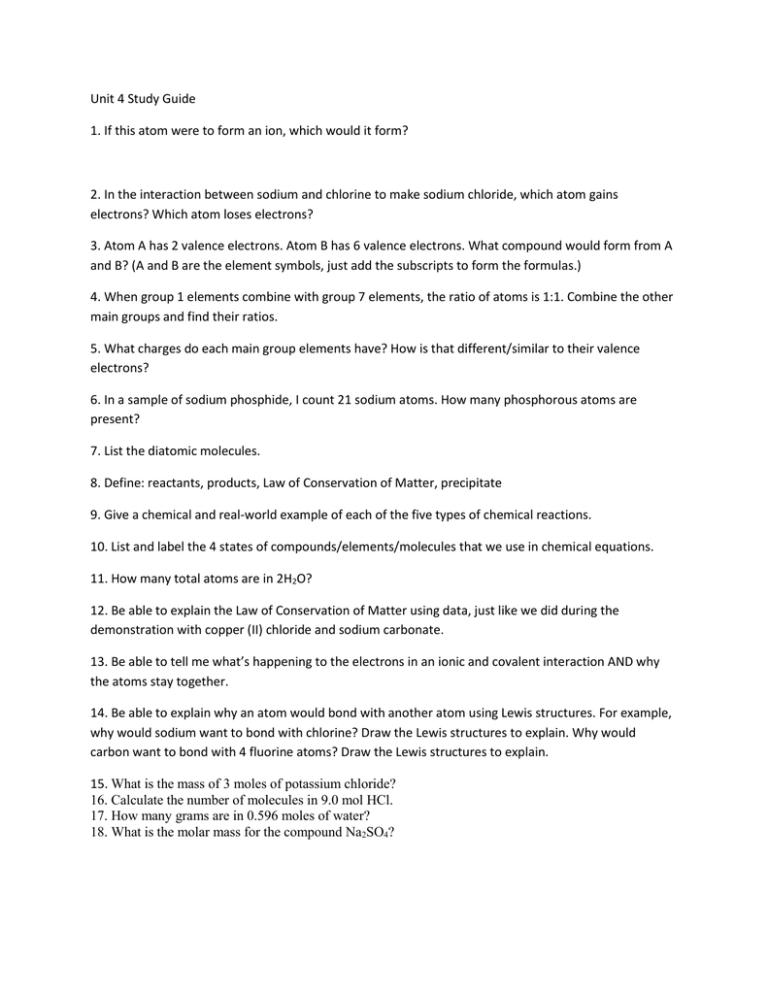File
advertisement

Unit 4 Study Guide 1. If this atom were to form an ion, which would it form? 2. In the interaction between sodium and chlorine to make sodium chloride, which atom gains electrons? Which atom loses electrons? 3. Atom A has 2 valence electrons. Atom B has 6 valence electrons. What compound would form from A and B? (A and B are the element symbols, just add the subscripts to form the formulas.) 4. When group 1 elements combine with group 7 elements, the ratio of atoms is 1:1. Combine the other main groups and find their ratios. 5. What charges do each main group elements have? How is that different/similar to their valence electrons? 6. In a sample of sodium phosphide, I count 21 sodium atoms. How many phosphorous atoms are present? 7. List the diatomic molecules. 8. Define: reactants, products, Law of Conservation of Matter, precipitate 9. Give a chemical and real-world example of each of the five types of chemical reactions. 10. List and label the 4 states of compounds/elements/molecules that we use in chemical equations. 11. How many total atoms are in 2H2O? 12. Be able to explain the Law of Conservation of Matter using data, just like we did during the demonstration with copper (II) chloride and sodium carbonate. 13. Be able to tell me what’s happening to the electrons in an ionic and covalent interaction AND why the atoms stay together. 14. Be able to explain why an atom would bond with another atom using Lewis structures. For example, why would sodium want to bond with chlorine? Draw the Lewis structures to explain. Why would carbon want to bond with 4 fluorine atoms? Draw the Lewis structures to explain. 15. What is the mass of 3 moles of potassium chloride? 16. Calculate the number of molecules in 9.0 mol HCl. 17. How many grams are in 0.596 moles of water? 18. What is the molar mass for the compound Na2SO4?






